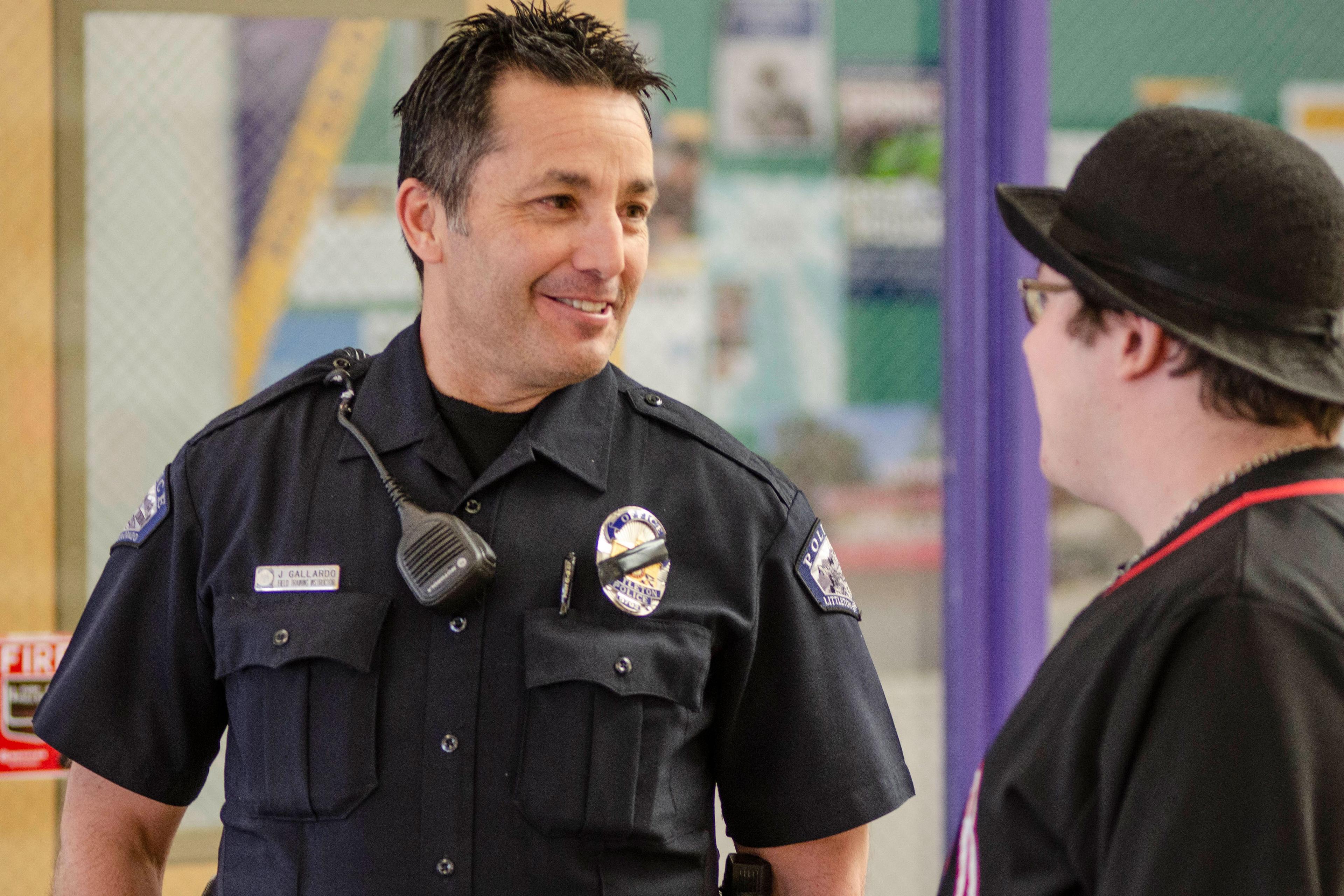
Littleton High School’s resource officer Jason Gallardo walks the hallways, greeting students and talking to them in the cafeteria.
“Hey, D-money, how’s it going? How’s ultimate Frisbee?” he called to one student on a recent day. “Don, you OK?” he asked another.
He does this so he knows the students — and it’s part of his job in threat assessment at the school. He watches out for kids who may be depressed or at risk of harming themselves or may want to harm others.
It’s been 20 years since two students opened fire at Columbine High School in Littleton, killing 12 students and one teacher. Since then, there have been hundreds of shootings at U.S. schools. Questions that arose in 1999 still remain: how can this be prevented?
Theories abound, from limiting access to guns, hiring more school counselors to more secure buildings. But as school shootings continue to occur, threat assessment teams — who work to understand the psychology and behavior of past shooters in order to stop future ones — have gained more attention.
“The nice thing for me is I know in my heart I’m going,” Gallardo said. “You will not see me sitting in my car when somebody is getting hurt in there. You won’t see me running away. You won’t see me hiding. I took this job, I knew that I would be willing to die for a kid.”
School resource officers like Gallardo are trained police officers assigned to specific schools. And as more attention has focused on school shootings, their jobs have become more defined.
Their work relies on research from threat assessment specialists around the country: people like John Nicoletti, who is based in Colorado, and was on the scene after the Columbine attack and the Aurora Theater Shooting.
Nicoletti consults with schools in the United States and abroad on how to spot potential threats and stop them. He advises schools to create a vortex — a centralized data collection point — where key people at the school share information. School resource officers are at the center, along with guidance counselors, psychologists and other safety officials.
Officers like Gallardo, who walk school hallways and talk to students, reminds everyone that they’re there to keep things safe, Nicoletti said.
“You’re broadcasting to students at the school, teachers, administrators, that they need to tell administrators if there’s a threat,” he said.

Since Columbine, Nicoletti and other psychologists point to specific behaviors to look for in teens who may be potentials threats: Kids considering violence often will write about shooting plots in school papers or on social media.
Occasionally, they’ll even tell someone about their plans, said Peter Langman, a psychologist in Allentown, Pennsylvania, who’s studied hundreds of school shooters.
“Sometimes the things that they disclose to their peers are very clear and explicit,” Langman said. “They will simply announce, ‘I’m going to bring a gun to school and kill people.’ “
Experts call these kinds of disclosures “leakage.”
Langman said anonymous tip lines like Colorado’s Safe2Tell, which encourages teens to call in if they’ve heard others talking about a violent plan or seen something in writing, can help head off violence.
“Many potential school shootings are foiled,” Langman said. “In many cases, we don’t even know the attacks that are being stopped because they don’t make the media so they tend to fly under the radar. But they are being stopped.”
School shooters will usually plan attacks well in advance, Langman said, so there’s time to stop them if everyone is watching for signs. Often they’ll have drawn a map or purchased guns as part of the plan.
Access to guns is part of the puzzle when trying to figure out how to prevent school shootings. Langman’s research has found most young shooters get their weapons from a parent or relative who has failed to secure them. He thinks the answer is less about changing gun laws than teaching gun owners to secure their weapons.
Nicoletti, the threat assessment expert in Colorado, said it’s critical that people take these kinds of precautions and take warning signs seriously.
“One of the things that gets me concerned when I’m doing a threat assessment,” Nicoletti said, “is if the folks I’m interacting with — one of them inserts the word ‘just’ in the sentence structure. They were ‘just’ joking. ‘Just’ planning. ‘Just’ having a bad day. And then what happens is people around buy into that and then they minimize it.”
Nicoletti said the key is awareness, but it’s important to remember that schools remain among the safest places for kids to be, and that school shootings are still very rare.







